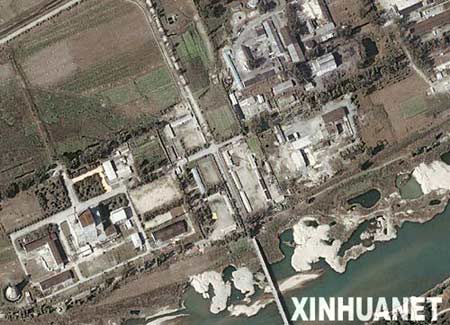
An image of Yongbyon nuclear center of North Korea is shown in this file photo dated September 11, 2005. (Xinhua Photo)
North Korea submitted the long-waited declaration of its nuclear inventory to China, the chair of the six-party talks, Thursday.
The White House said in a statement shortly after the submission that it would lift trade sanctions against North Korea and remove it from the list of state sponsors of terrorism.
A breakthrough of the six-party talks, aimed at stripping North Korea of its nuclear weapons program, was made, but more progresses were needed to finalize the disarmament process.
Painstaking progress
The declaration, promised to be "complete and accurate" by North Korea under the October 2007 six-nation joint document, was due to be submitted by the end of that year.
Disagreement between the US and North Korean officials over the declaration made North Korea miss the December 31 deadline and deadlocked the so called "second-phase actions for implementation of the September 2005 Joint Statement."
The US and North Korea disputed mainly on three issues:
- The amount of the plutonium North Korea has produced. US officials said they believe DPRK has produced about 50kg of plutonium, or enough for about eight nuclear bombs. North Korea insisted it only had about 30 kg.
- The uranium enrichment program. Washington suspected North Korea of having a secret program to enrich uranium for weapons.
- Nuclear proliferation. The US accused North Korea of proliferating nuclear technology and material to the likes of Syria.
The US asked those issues addressed in the declaration but North Korea repeatedly denied the allegations.
After many rounds of painstaking negotiations, between US top envoy to six-party talks Christopher Hill and his North Korean counterpart Kim Kye Gwan, as well as nuclear experts meeting at working level, a compromise was made over the declaration.